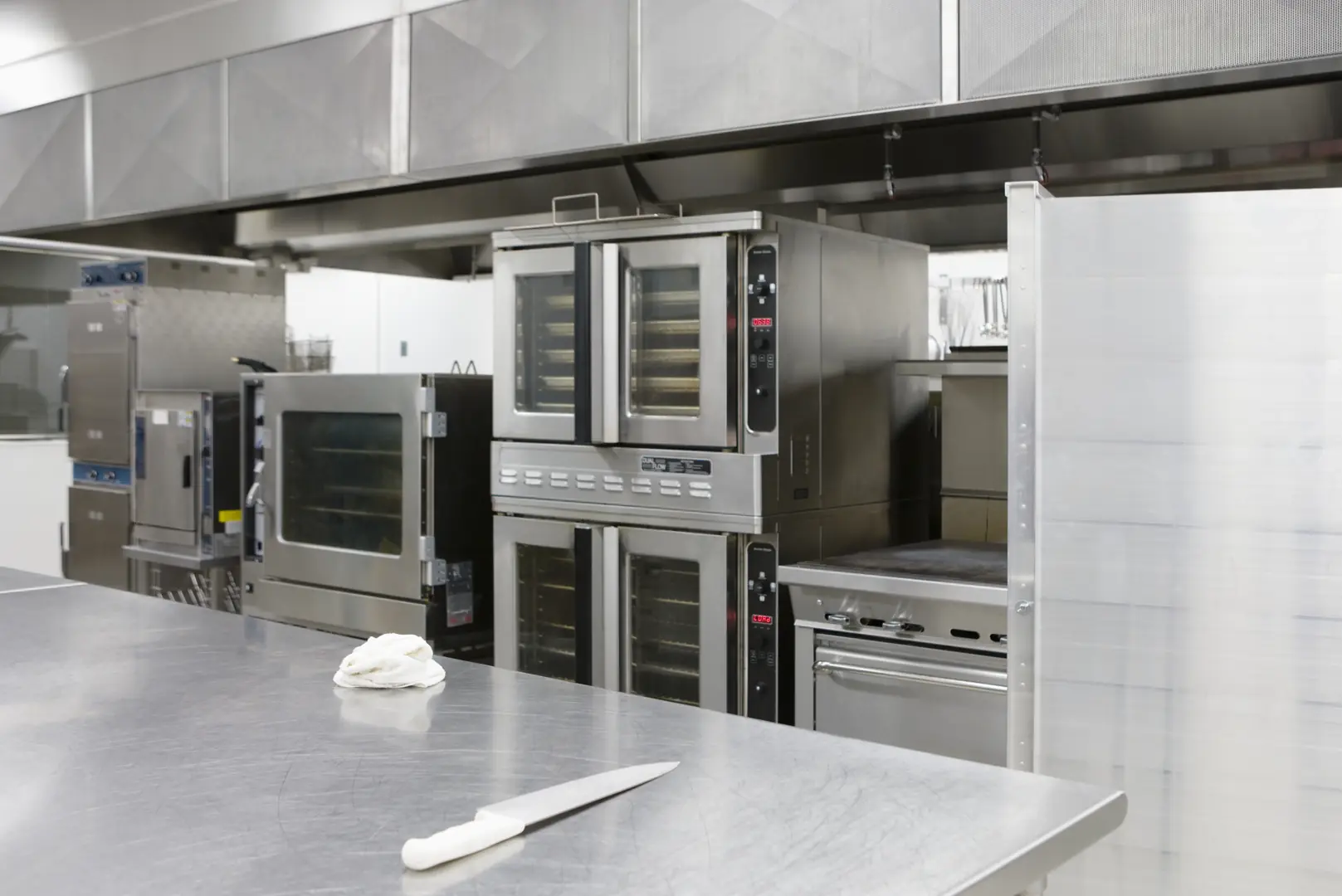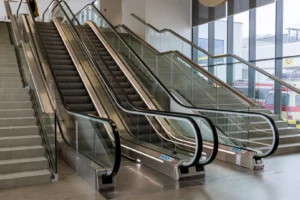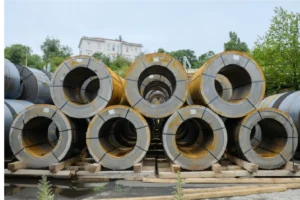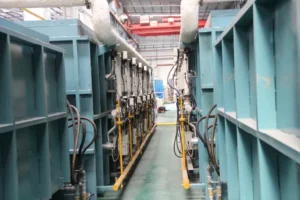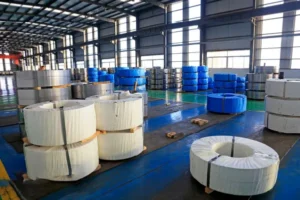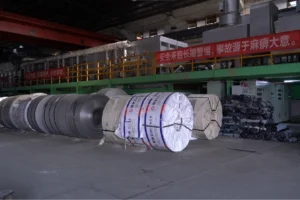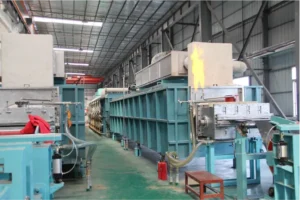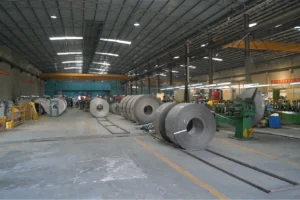Why Stainless Steel Coils are the Top Choice for Architectural Projects
Struggling to find a material that is both visually stunning and structurally sound? Traditional options often force a compromise, failing on either aesthetics or long-term durability. Stainless steel coils deliver both.
Stainless steel coils are the top choice for architectural projects because they offer an unmatched combination of corrosion resistance, high tensile strength, aesthetic versatility, and sustainability. This makes them ideal for creating durable, low-maintenance, and visually striking modern buildings that are built to last.
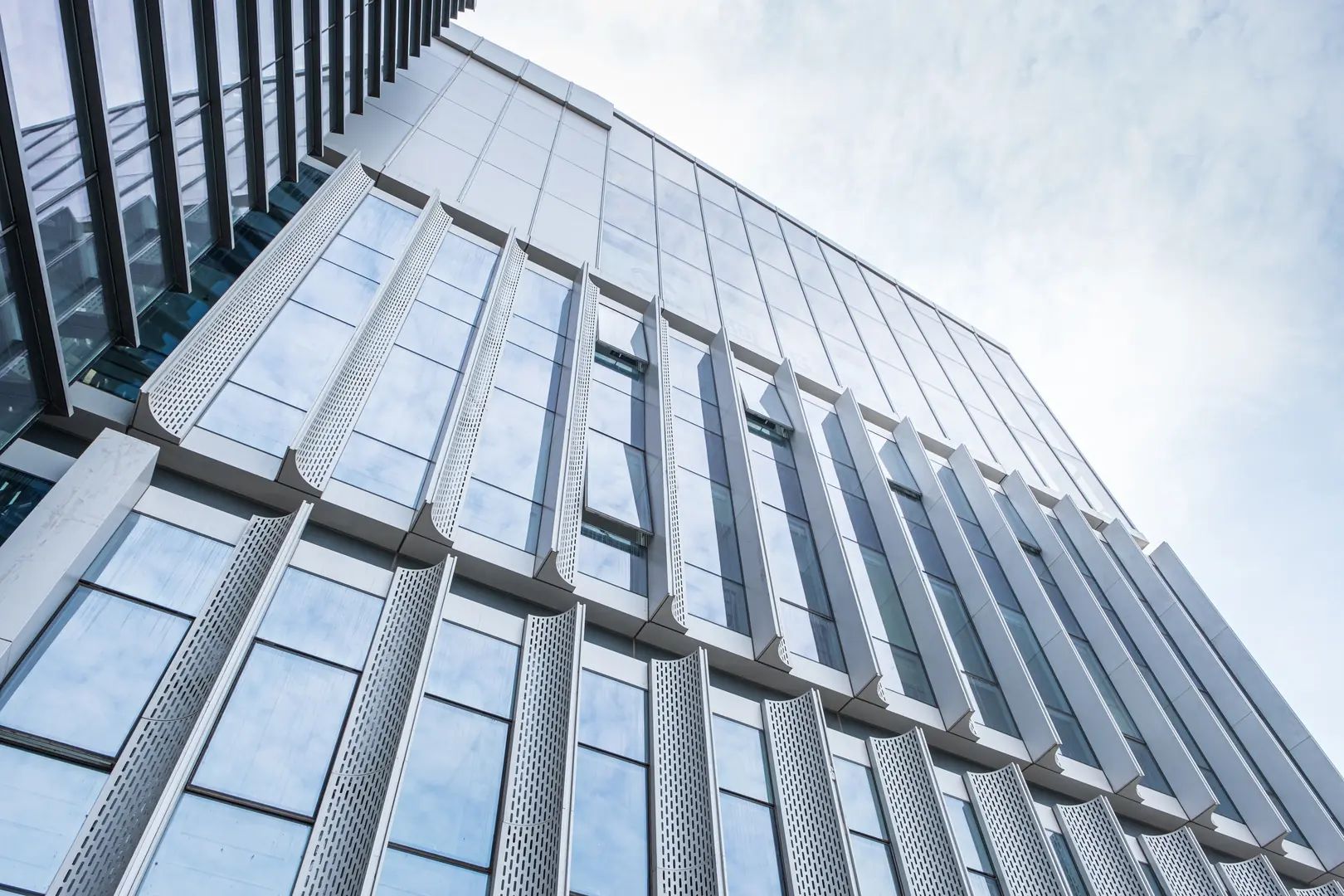
This unique blend of properties is not just a coincidence; it's the reason why architects and builders are increasingly turning to this material to solve modern construction challenges. As the Global Business Director at MFY, I've seen firsthand how projects are transformed by the strategic use of stainless steel. Let's explore why this material has become so indispensable in the world of architecture.
What Makes Stainless Steel Coils an Ideal Choice for Architectural Projects?
Choosing the right material is a critical decision. A poor choice can compromise a building's longevity and its design intent. Stainless steel coils uniquely satisfy both aesthetic and functional demands.
Stainless steel coils are ideal for architecture because they merge functional superiority with creative freedom. Their inherent strength and resistance to environmental factors ensure structural integrity, while their adaptability in form and finish allows architects to realize ambitious and innovative designs without compromise.
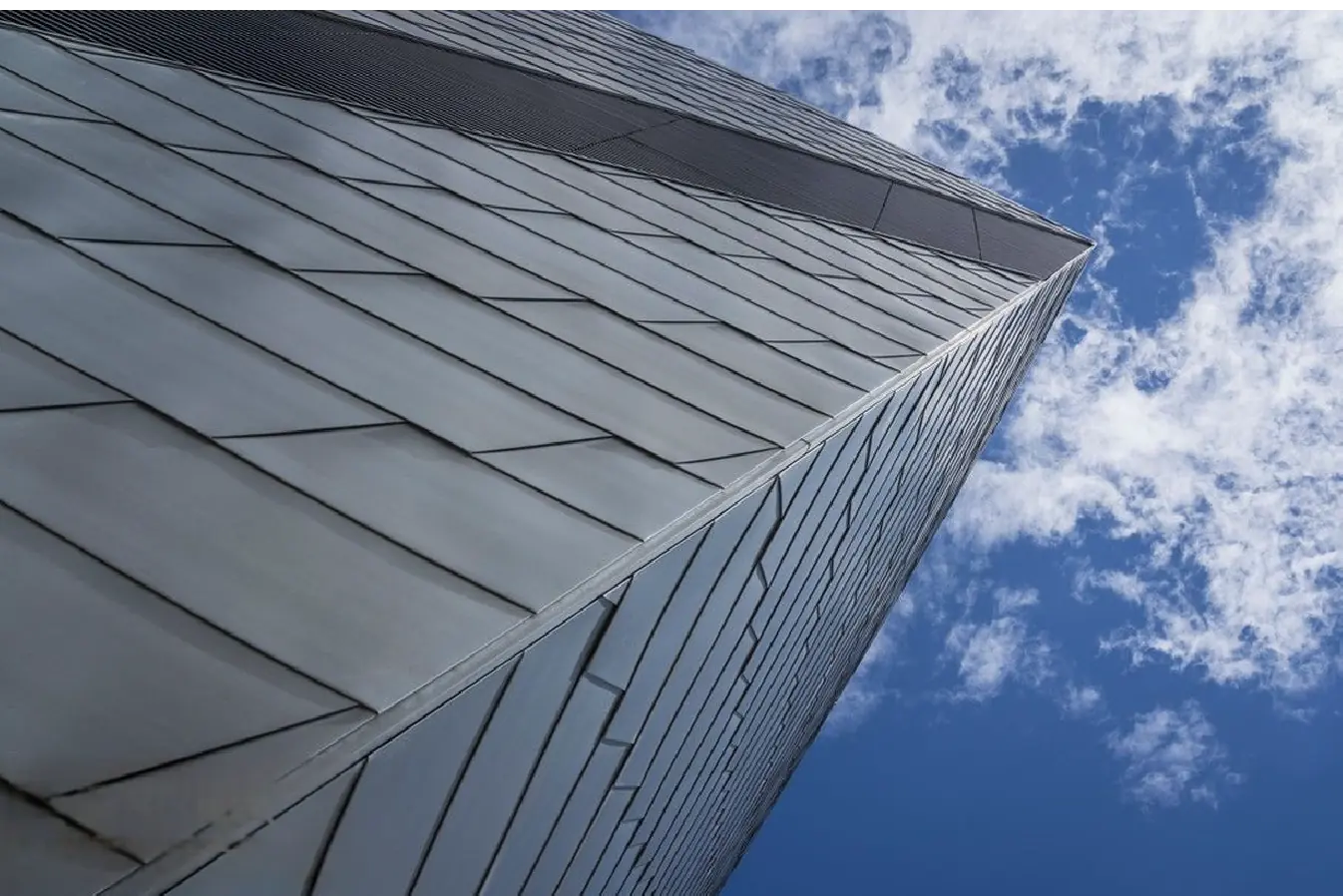
Let's dive deeper into this perfect balance. On one hand, you have the practical, non-negotiable requirements of any major construction project. On the other, you have the architect's vision. Stainless steel is the bridge between the two. I remember a client in Southeast Asia who was designing a landmark coastal tower. They needed a material that could withstand the salty, humid air while also providing a sleek, futuristic look. We worked with them to supply Grade 316L[^1] coils, which met both needs perfectly. This is a common story. The material’s ability to be both a workhorse and an artist’s medium is its greatest strength.
Functional Superiority
Functionally, stainless steel is a fortress. Its chemical composition, particularly the presence of chromium, creates a passive, self-healing layer[^2] that protects against rust and corrosion. This is crucial for exterior cladding, roofing, and structural components exposed to the elements. Unlike other metals that may require protective coatings that degrade over time, stainless steel's protection is built-in, ensuring the building's integrity for decades.
Aesthetic Versatility
From a design perspective, the possibilities are nearly endless. Stainless steel coils can be processed to have a wide range of finishes, from a reflective mirror polish to a subtle brushed or matte texture. They can be colored, embossed, and easily formed into complex curves and sharp angles. This allows architects to create dynamic facades, intricate interior details, and unique structural elements that would be impossible with more rigid materials.
| Feature | Stainless Steel | Aluminum | Coated Carbon Steel |
|---|---|---|---|
| Corrosion Resistance | Excellent | Good | Poor (if coating is breached) |
| Strength | High | Medium | High |
| Aesthetic Finish | Versatile (polished, brushed) | Good (anodized, painted) | Limited (painted) |
| Maintenance | Very Low | Low | High (requires repainting) |
What Are the Key Benefits of Using Stainless Steel Coils in Architecture?
Project budgets are always a concern. Unexpected, long-term maintenance costs can derail even the best-laid plans. Stainless steel coils provide lasting value through their exceptional durability and minimal upkeep.
The key benefits of using stainless steel coils in architecture include exceptional longevity, low lifecycle costs due to minimal maintenance, and high sustainability. The material is 100% recyclable, contributing to green building certifications and reducing the project's overall environmental impact.

When we talk about benefits, it's essential to look beyond the initial material cost and consider the total cost of ownership over the building's lifetime. A project I was involved with for a public transport hub in Europe initially considered a cheaper, coated material for the roofing. We presented a lifecycle cost analysis that showed how stainless steel, despite a higher upfront investment, would save them millions in maintenance and replacement costs over 30 years. They made the switch, and today, that roof looks as good as it did on day one. This long-term thinking is where stainless steel truly shines.
Longevity and Low Maintenance
A building clad in stainless steel is a building that endures. It resists staining, discoloration, and degradation from UV radiation, pollution, and acid rain. For building owners, this translates directly into savings. There's no need for periodic repainting or recoating. A simple cleaning with water is often enough to restore its original luster, even after years of exposure. This "install and forget" quality is a massive advantage in both commercial and public infrastructure projects.
Sustainability and Environmental Impact
In today's world, sustainability is no longer optional. Architects and developers are under increasing pressure to use environmentally responsible materials. Stainless steel is a champion of the circular economy. It is produced with a high percentage of recycled scrap and is 100% recyclable at the end of its life without any loss of quality. This helps projects earn valuable credits in green building rating systems like LEED and BREEAM[^3], enhancing the property's value and brand reputation.
How Do Stainless Steel Coils Enhance the Durability of Architectural Structures?
Modern buildings must withstand increasingly harsh environmental conditions. Corrosion and material fatigue can lead to safety risks and expensive structural repairs. Stainless steel’s inherent properties provide a robust, long-lasting defense.
Stainless steel coils enhance durability through their intrinsic corrosion resistance and high tensile strength. The chromium content forms a protective passive layer against rust, while its mechanical properties allow for thinner, lighter, yet stronger designs that resist physical stress and impact.

The science behind stainless steel's durability is what gives engineers and architects peace of mind. It’s not a coating or a temporary treatment; it's fundamental to the material itself. This reliability is why it's specified for everything from skyscraper curtain walls to critical structural supports in challenging environments. At MFY, we ensure our coils meet precise chemical and mechanical specifications so that our clients can build with absolute confidence in the material's performance.
Intrinsic Corrosion Resistance
The magic ingredient is chromium, which must be present at a minimum of 10.5%. When exposed to oxygen, the chromium forms a thin, invisible, and incredibly tough passive film of chromium oxide on the surface. If this layer is scratched or damaged, it instantly reforms, providing continuous protection against moisture and corrosive agents. This self-healing ability is what makes it so resilient.
High Tensile Strength
Stainless steel boasts an excellent strength-to-weight ratio[^4]. This means that structural components can be designed to be thinner and lighter than those made from traditional steel, without sacrificing strength or rigidity. This not only reduces the material load on the building's foundation but also allows for longer spans and more open, column-free interior spaces—a key objective in modern architectural design.
| Grade | Common Use Case | Key Characteristic |
|---|---|---|
| 304 | Interior elements, facades in low-pollution areas | Excellent general-purpose corrosion resistance |
| 316 | Coastal areas, industrial zones, marine fittings | Enhanced corrosion resistance due to molybdenum |
| 430 | Decorative interior applications, trim | Good corrosion resistance, magnetic |
What Solutions Do Stainless Steel Coils Offer for Common Architectural Challenges?
Architects are constantly pushing the boundaries of design. However, conventional materials often limit creative expression or fail to meet complex performance requirements. Stainless steel coils provide versatile, practical solutions.
Stainless steel coils solve architectural challenges by enabling the creation of complex geometric shapes and lightweight, high-strength structures. Their formability is perfect for innovative facades, while their strength-to-weight ratio is ideal for long-span roofs and structurally demanding applications.

The true test of a material is how it performs when faced with a difficult problem. I've seen stainless steel solve so many. From creating fluid, wave-like facades that would be impossible with brittle materials to providing the necessary strength for delicate-looking support structures, its adaptability is remarkable. We once supplied highly formable coils for a museum project that featured a complex, tessellated exterior. The architect's vision was ambitious, and only stainless steel had the combination of malleability and strength to make it a reality.
Challenge 1: Complex Geometries
Modern architecture often moves away from simple, flat planes towards organic curves and intricate patterns. Stainless steel is highly ductile, meaning it can be bent, stretched, and shaped without losing its structural integrity. Coils can be roll-formed, press-braked, or stamped into virtually any shape an architect can imagine. This allows for the creation of visually stunning and unique building envelopes that define a project's identity.
Challenge 2: Fire and Seismic Resistance
Safety is the most important challenge of all. Stainless steel performs exceptionally well in fires, retaining a significant portion of its strength at elevated temperatures far better than aluminum or carbon steel. Its ductility[^5] also makes it an excellent choice for buildings in seismically active zones, as it can absorb a great deal of energy during an earthquake without catastrophic failure. This inherent resilience provides an added layer of safety and security for the building's occupants.
What Are the Best Practices for Incorporating Stainless Steel Coils in Architectural Design?
Using a premium material like stainless steel requires knowledge. Improper grade selection or poor installation can undermine its benefits and lead to disappointing results. Following key best practices ensures success.
Best practices for using stainless steel coils include selecting the appropriate grade and finish for the specific environment, ensuring proper installation techniques to avoid contamination, and designing for natural cleaning by rain to minimize maintenance. Partnering with a knowledgeable supplier is crucial.
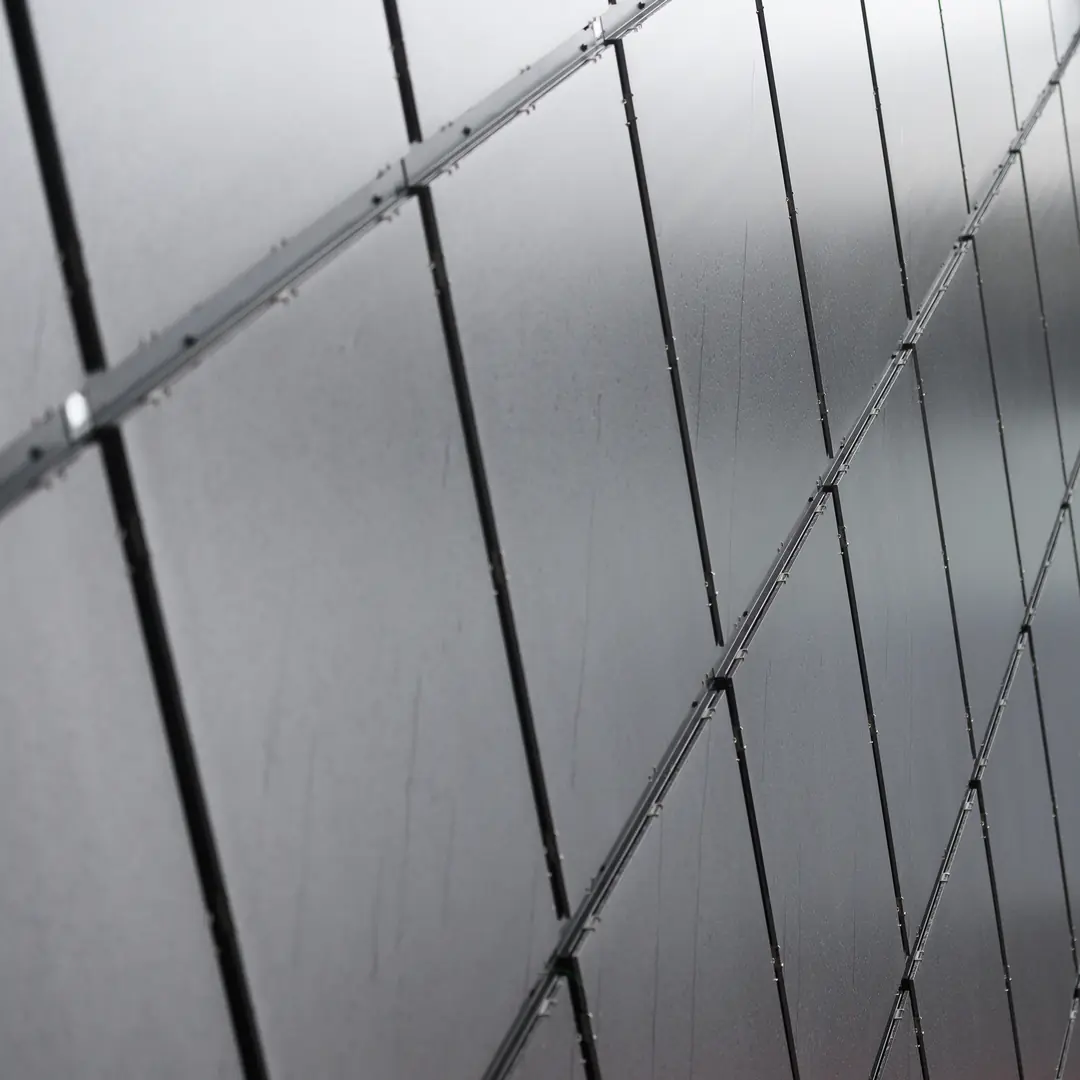
To get the most out of this incredible material, you have to do your homework. It's not a one-size-fits-all solution. The details matter immensely, from choosing the right alloy to specifying the direction of a brushed finish. At MFY, a significant part of my role is consulting with clients to ensure these details are correct. We guide them through the selection process, helping them match the right product to their project's specific location, design intent, and budget. This collaborative approach is the surest path to a successful outcome.
Selecting the Right Grade and Finish
The single most important decision is choosing the correct grade. As a rule of thumb, use Grade 304 for most inland and non-polluted environments. For coastal, marine, or heavily polluted industrial areas, the added molybdenum in Grade 316 is essential to prevent corrosion. The finish is also a key consideration. A smoother, more polished finish is generally more resistant to deposits and easier to clean than a rougher, textured one.
Ensuring Proper Design and Installation
Design and installation details are critical. Designs should promote water runoff to allow rain to naturally wash the surfaces, preventing the buildup of dirt and contaminants. During installation, it's vital to avoid contact with carbon steel tools or particles, as this can cause galvanic corrosion[^6] and surface rust. Using dedicated tools and protective films until the final reveal is a simple but effective way to ensure a pristine finish. A reliable supplier can provide detailed handling and installation guidelines to contractors.
Conclusion
Stainless steel coils are not just another building material; they are a comprehensive solution for modern architecture. They offer a future-proof investment by delivering a rare combination of aesthetic flexibility, unparalleled durability, and environmental responsibility, ensuring that today's iconic buildings will stand the test of time.
Have Questions or Need More Information?
Get in touch with us for personalized assistance and expert advice.
